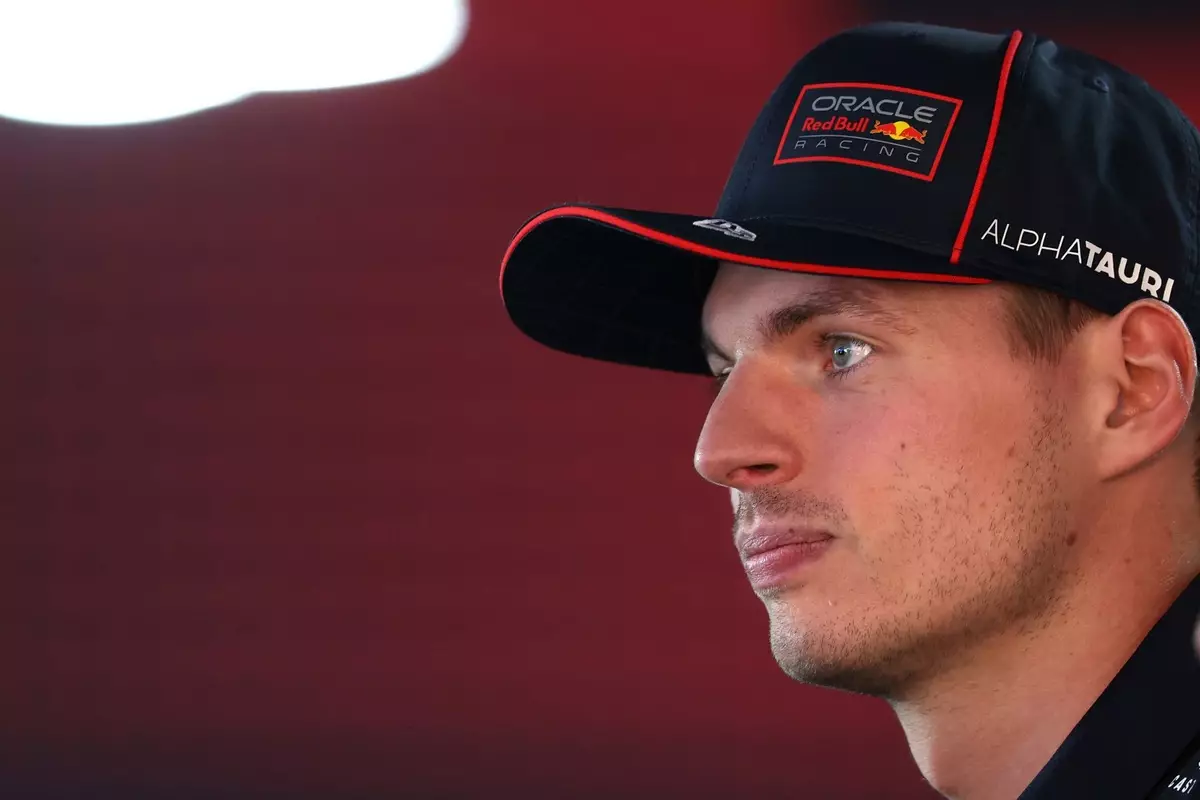Max Verstappen has often been the voice of reason amidst the high-octane drama of Formula 1, but his candid assessment of Red Bull’s recent performance against McLaren reveals a stark reality. The 2023 Miami Grand Prix was a microcosm of the current landscape, demonstrating not only tactical prowess but, more crucially, a pronounced disparity in race pace. Verstappen’s staggering 40-second deficit to race winner Oscar Piastri serves as a wake-up call: despite Red Bull’s past supremacy, they face vigorous competition from a revitalized McLaren team.
Verstappen’s expectations surrounding the team’s upgrades—specifically the new floor design installed on his car—echo a blend of optimism and realism. His remark that the improvements are “a little step forward” suggests an understanding that even incremental changes may not be sufficient to bridge the gap to a team that has seemingly mastered race execution. While he acknowledges potential performance gains, Verstappen’s foresight prevents him from being overly optimistic; he does not expect a miraculous turnaround in the team’s fortunes merely because of these upgrades.
A Realistic Appraisal of the Competition
What is particularly telling is Verstappen’s admission of the overall race pace being “depressing” for his team, a sentiment shared by Red Bull’s team advisor, Helmut Marko. The contrast between Red Bull and McLaren’s performance went beyond just the raw speed; it highlighted strategic shortcomings in Red Bull’s tire management and adaptability. As they face an immediate challenge, the team must not only analyze performance metrics but also dissect the technical aspects that allow McLaren to enjoy such a significant advantage, particularly in races marked by high tire degradation.
The coaching staff and engineers at Red Bull must undertake a thorough analysis to understand the nuances of tire interaction and degradation. Verstappen’s point that tire management is “track-specific” underlines the complexity of F1 racing, where various circuits demand different strategies and setups. This means that Red Bull’s engineers are under pressure to adapt swiftly and intelligently—a task that is easier said than done in the highly competitive environment of Formula 1.
The Unknowns of Technical Directive Changes
The upcoming Spanish Grand Prix hints at more changes in the competitive landscape, chiefly the introduction of a strict technical directive regarding flexing front wings. While the FIA’s clampdown aims to level the playing field in terms of aerodynamic advantages, it raises the question of how adaptive teams can be in response to evolving regulations. Verstappen’s skepticism on whether these changes would yield substantial performance shifts is noteworthy; he suggests that no single adjustment is likely to provide the missing pieces needed to close the gap to McLaren.
This sentiment emphasizes the intricate balance of innovation and compliance within the sport. While teams are scrambling to improve upon past designs, they must also navigate the risks of technical penalties and the broader implications of regulatory changes. McLaren’s current advantage in aerodynamic performance highlights a significant competitive edge that Red Bull cannot overlook, suggesting that the next few races will be critical for evaluating whether strategies will shift in their favor.
The Importance of Time in Formula 1
One of the most poignant aspects of Verstappen’s remarks revolves around the inherent unpredictability and time constraints of Formula 1 racing. Without knowing when Red Bull may uncover the reasons behind McLaren’s superior rear tire management, the clock is ticking for the team to make desperate yet calculated strides toward improvement. The competitive nature of F1 leaves no room for complacency, and each race presents an opportunity lost or gained.
Verstappen’s statement about the challenges facing them is grounded in the reality of performance management in motorsport. The emotional gravity of the situation is palpable; Red Bull must strike a delicate balance between immediate performance needs and long-term strategies to regain their status as the preeminent force in F1. As the season unfolds, it will be fascinating to observe how this legendary team navigates its path, challenged by both familiar rivals and new dynamics across circuits worldwide. In the high-stakes world of Formula 1, the race for supremacy is not merely about speed—it’s about strategy, understanding, and the relentless pursuit of excellence.

